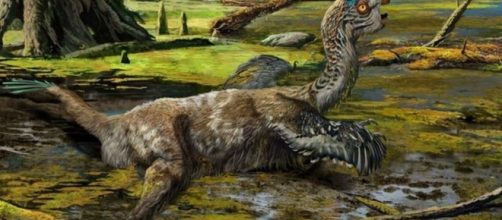Bones of a bird-like dinosaur have been discovered, buried in a construction site in South China. Located at the No. 3 high school of Ganxian, near Ganzhou in the Jiangxi Province, are the remains of what is called Oviraptorosaurs, theropod Dinosaurs that had feathers, toothless skulls and large crests on their heads. This specimen is being heralded as a new species, the Tongtianlong Limosus.
What are These Dinosaurs?
The Oviraptorosaur flourished during the Cretaceous era in Asia and North America, fossils suggest. They could grow up to seven feet in length, and may have eaten a diet comprised of eggs, mollusks (from which snails and slugs descend), plants, shellfish and nuts.
This differs them from other theropods, who were more conventional carnivores. Mostly discovered around China, 35 different Oviraptorosauri have been uncovered, with fossil hotbeds including northern China (including Inner Mongolia and the western Liaoning Province), central China (the Henan Province) and southern China (including the Guangdong and Jiangxi provinces, where Tongtianlong was found). Tongtianlong has been described by scientists as 'about the size of a sheep'.
These Fossils Were Nearly Destroyed
Explaining how the bones were discovered, Dr Stephen Brusatte, from the University of Edinburgh said that, 'It was found at a construction site by workmen when they were dynamiting, so they nearly blasted this thing off the hillside.' Regarding how nearly things could've gone wrong, Dr Brusatte succinctly described it as, 'We almost never knew about this dinosaur.'
Some small parts of the fossil were, in fact, blasted off during the dynamiting, but considering the circumstances of its discovery, the fossil has come out as unscathed and near complete.
The fossil was found embedded in rocks belonging to the Nanxiong Formation. 'Modern birds came from dinosaurs,' remarked Dr Brusatte, 'and its dinosaurs like Tongtianlong that give us a glimpse of what the ancestors of modern birds would have looked like.'

